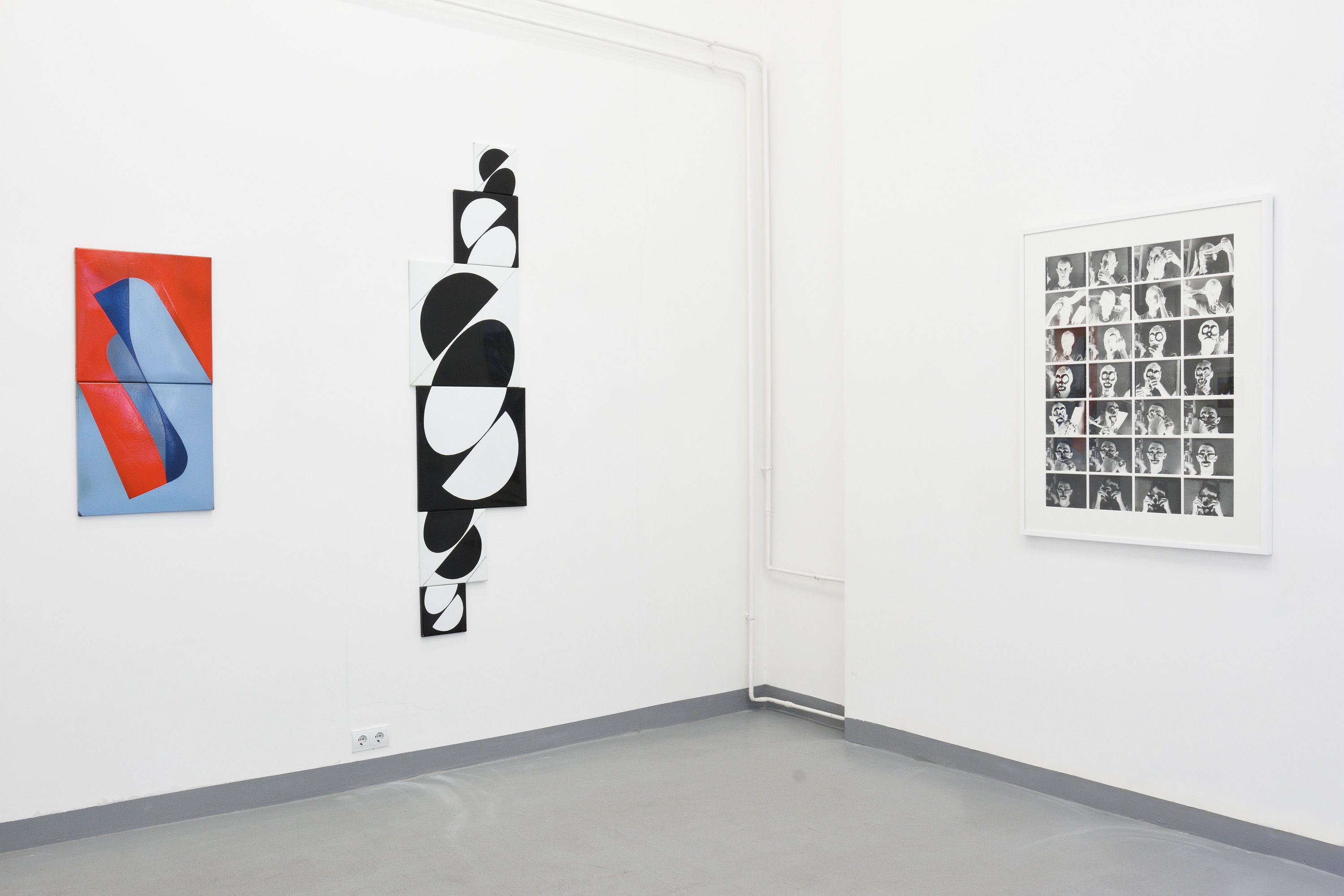Kálmán Szijártó
Art Gestures
| Venue: | acb NA |
| Date: | Nov 24 2017 – Jan 12, 2018 |
Description
Kálmán Szijártó (b. 1946) was a founding member of the Pécs Workshop. While the activity of the group spanned over ten fertile years between 1969 and 1980, when prolific co-authorship and individual practices unfolded in parallel and with equal intensity for each artist, Kálmán Szijártó remains to this day the least known member of the group. After a first representative selection of works from the Pécs Workshop period exhibited in Vienna this September, acb NA now opens Kálmán Szijártó’s first individual exhibition that focusses on ideas that were central to his practice and on works that show the variety of media used by the artist, from works on paper through enamel to photo.
Under the guidance of Ferenc Lantos (1929-2014), an older painter and professor from Pécs who undoubtedly influenced his young student, Szijártó started to examine basic visual questions such as form, colour, composition, as well as the division of a basic motif into three or four basic units that he would then combine by rotating and permuting them, and reducing or increasing the size of these basic units. This crystallized in a series of preparatory sketches as well as enamel pieces on display in the exhibition, in which Szijártó combined the different unit sections of a basic motif along with the proportions and sizes of the different plaques when assembling them defies the traditional square, rectangle or rhombus shapes given to compositions, and playfully evokes the idea of ‘moulded enamel’.
In parallel, as early as 1970, the Pécs Workshop members embarked on conceptual experimentation, focusing on visual questions and problems related to structuralism and seriality, also as a way to break loose from their master’s formal rigidity. Their attention and practice also opened up to a diversity of (new) media, such as video, photography, performance, outdoor interventions and public art. Szijártó and Kismányoky headed to the natural environment surrounding the city of Pécs to carry out outdoor actions, first only the two of them, then with the other members of the group, between 1970 and 1972. The situation allowed them to perform an outdoor experiment of the concepts of interference, correlation and influence, aiming to study how geometry relates to nature and what results from this encounter, as shown by Pécs. Stone Quarry. Detail forms (1970).
In 1973, together with the other members of the Pécs Workshop, Szijártó participated in the Balatonboglár Chapel exhibition series initiated and organized by György Galántai, with – among others – one piece of his series entitled Art Gestures (1971-1974), in which a hand bearing the inscription ART on its palm, slowly closes into a fist, letting ART appear again on the third, fourth and fifth fingers, each of them bearing one letter. Although the artist claims to be apolitical, this series showing art as a hand able to caress and punch at the same time certainly had a critical meaning in the context where it was presented. This critical sharpness appeared in the work of the members as well: in the same year, Károly Kismányoky concentrated on the theme of the eyes, which – much like in Károly Halász’s series High Stand -- referred directly to the oppressive cultural political situation and to the surveillance under which the progressive art scene was kept. Szijártó developed several versions on this series, mainly using hands, fingers and nails, but also a burning cigarette on the side of which the word art slowly vanished as the tobacco and paper turned into ash.
The use of his own body did unfold again later, in his series entitled Transformations (1977-1978), one of the most emblematic works Kálmán Szijártó, which also took the form of a performance (1979-1980). In the photo series, also on view in acb NA, the artist stands in front of a mirror, gradually wrapping his entire head with gauze and painting on himself with black ink. Only after a few phase photos does the viewer discover a tricky inversion of the scene; it is not the artist who is photographed, but his reflection in the mirror. While the focus and the frontal position of the artist never change, the viewer constantly shifts between two spaces and realities, the artist’s face and its reflection, the action itself and its photographic documentation. The visual impact is wittily disturbing, and demonstrates the complexity that characterizes Szijártó’s intellectual relation to both image and space.

